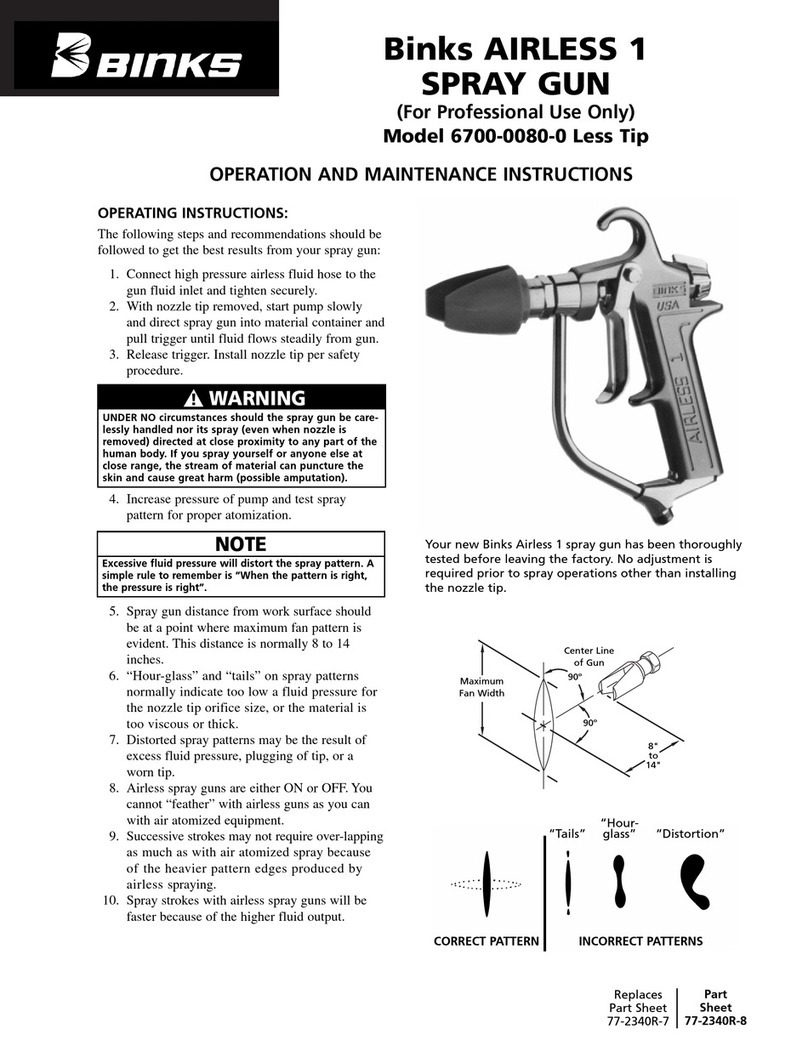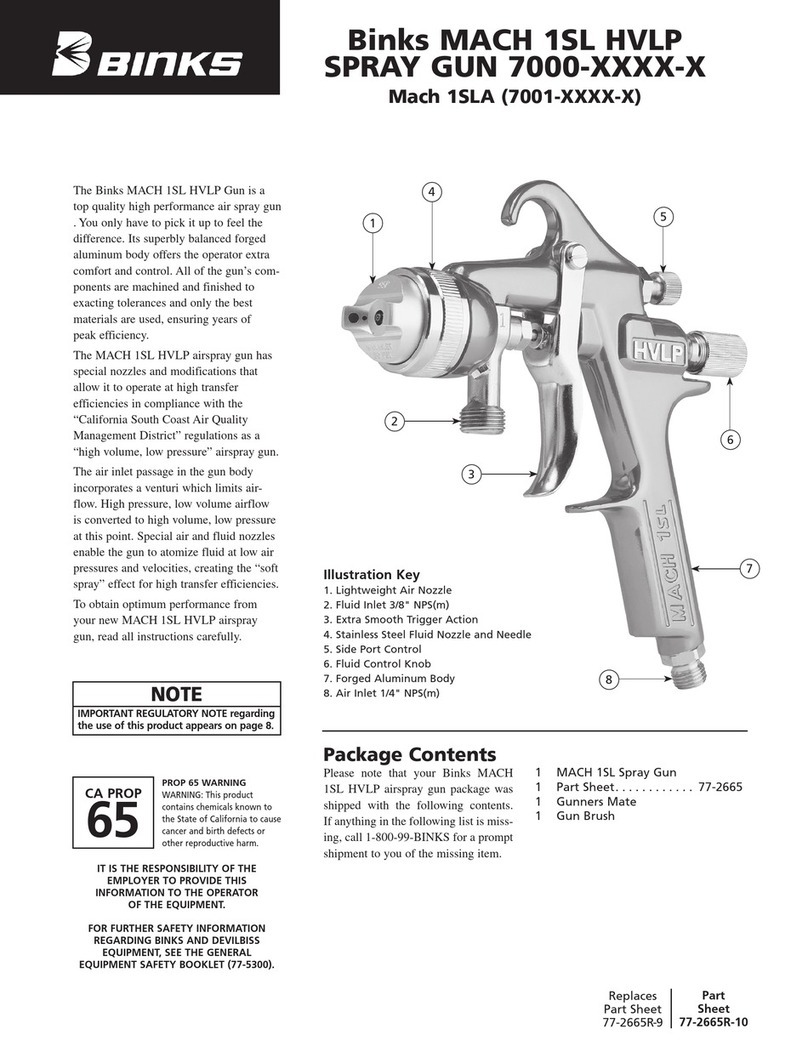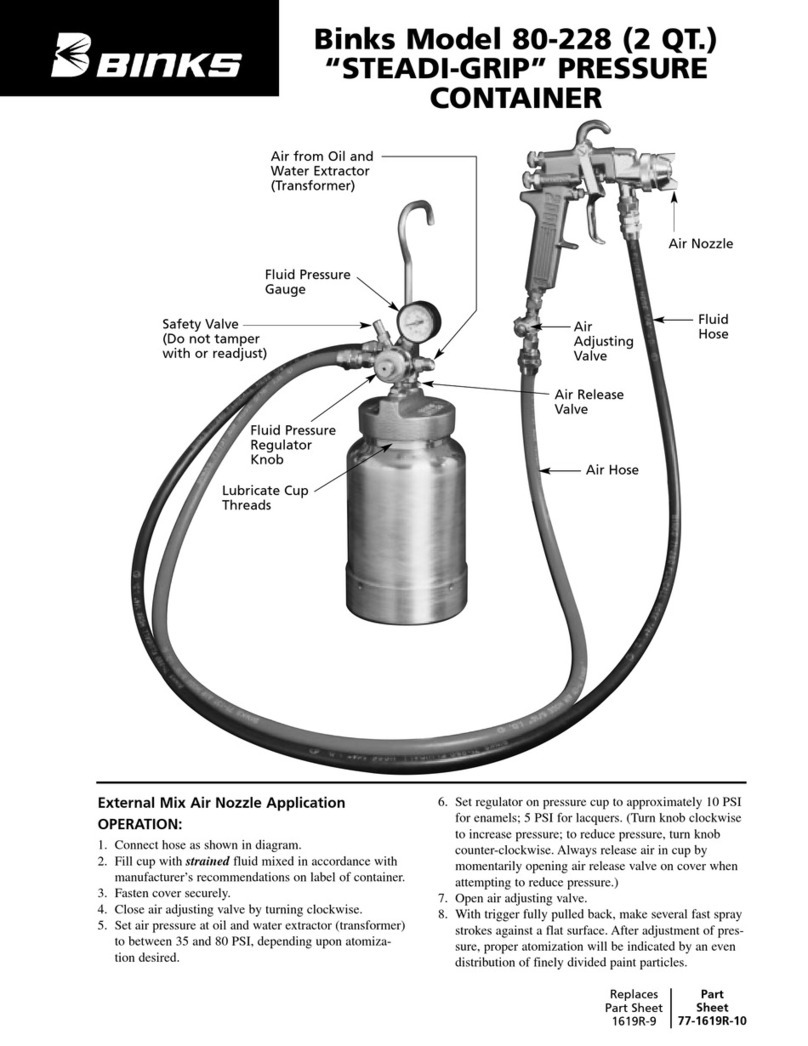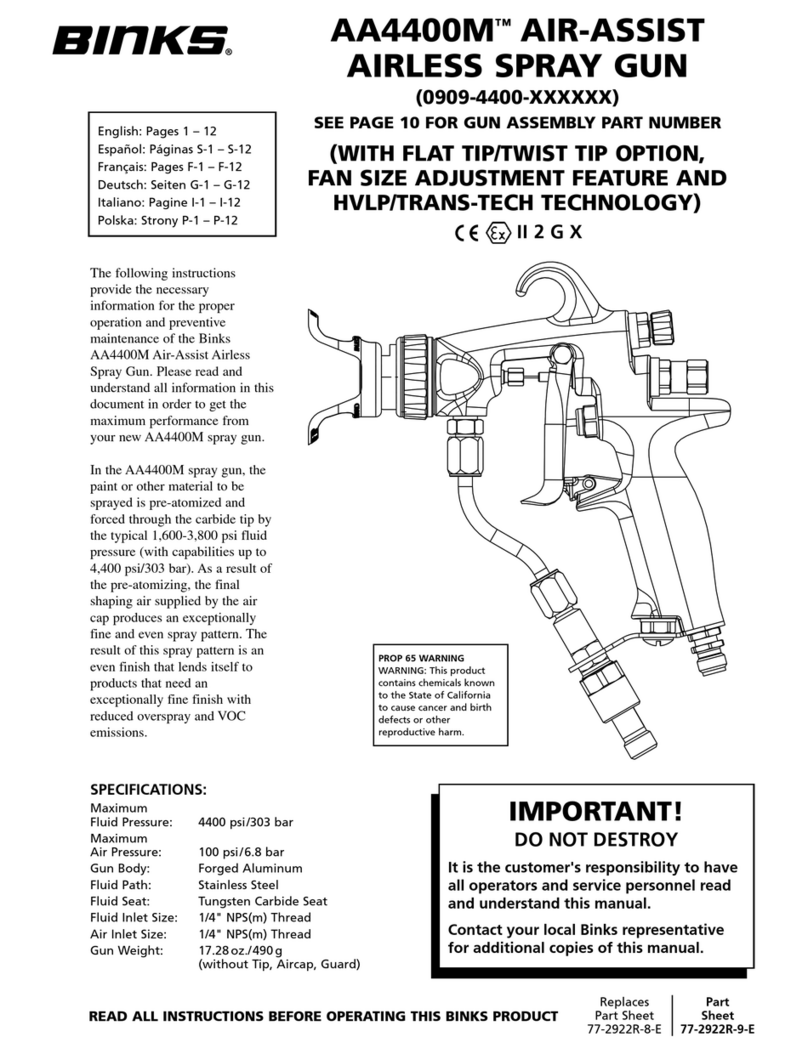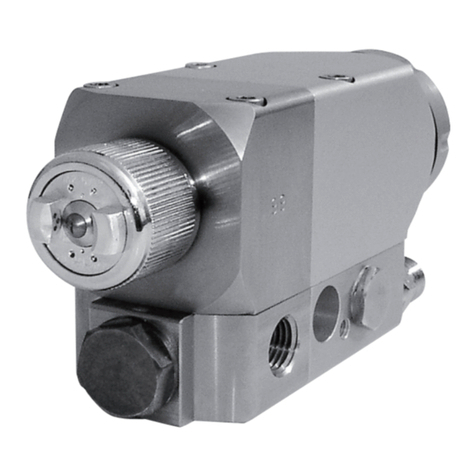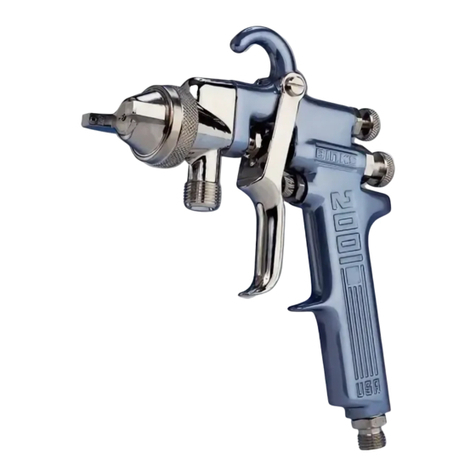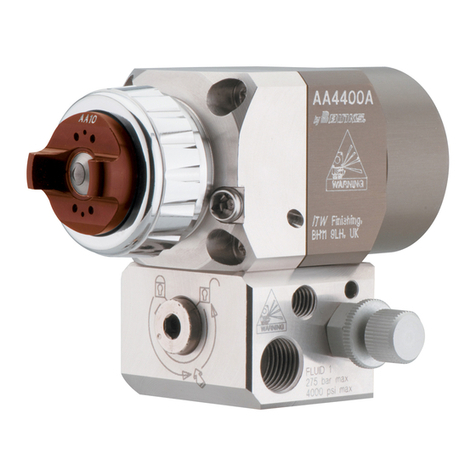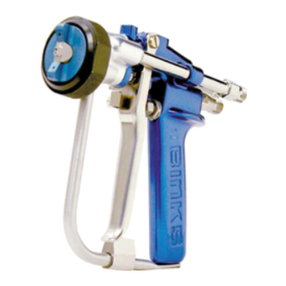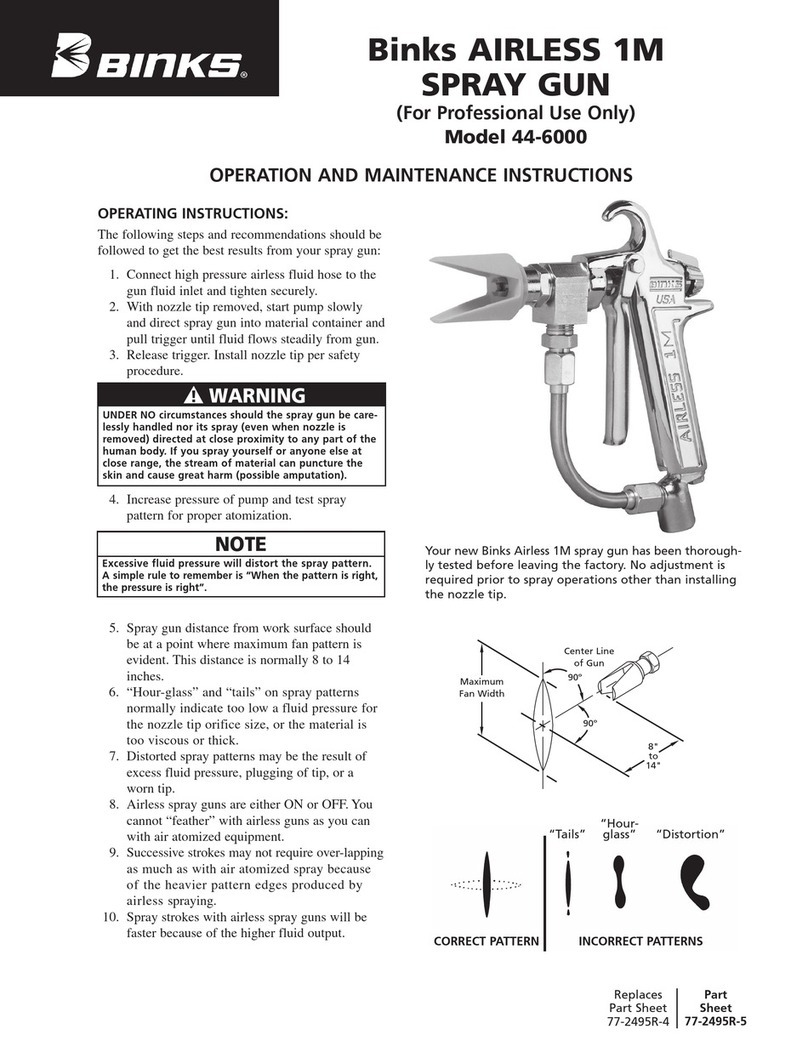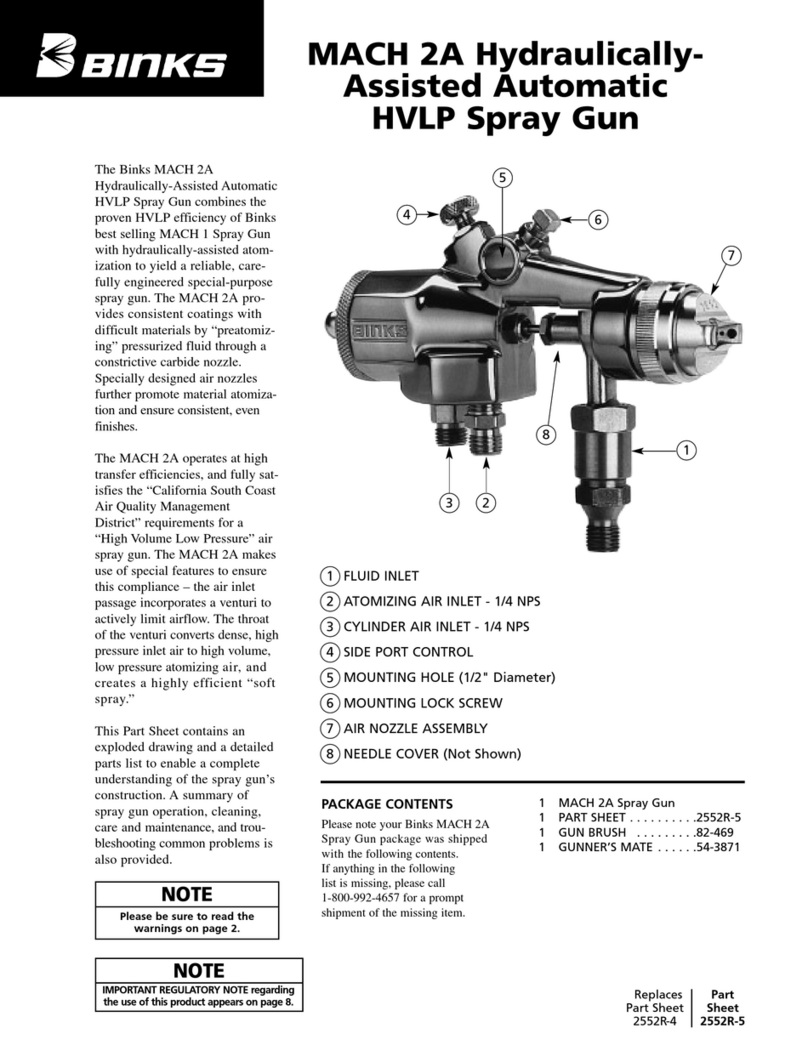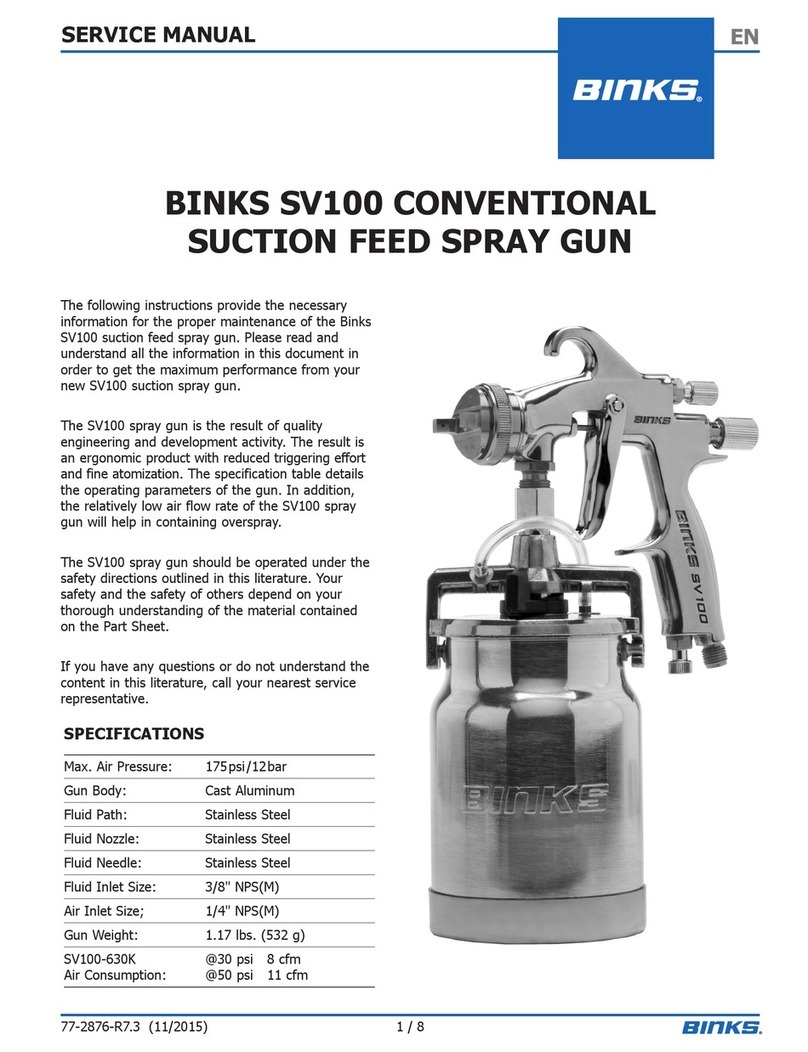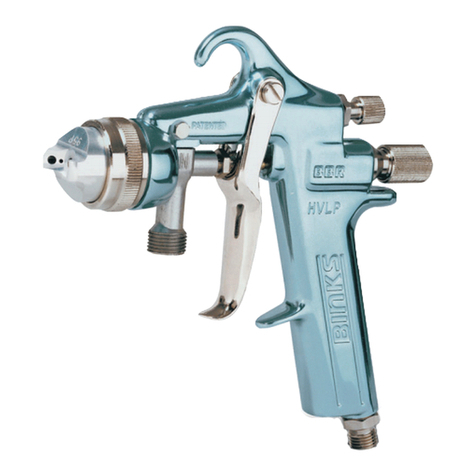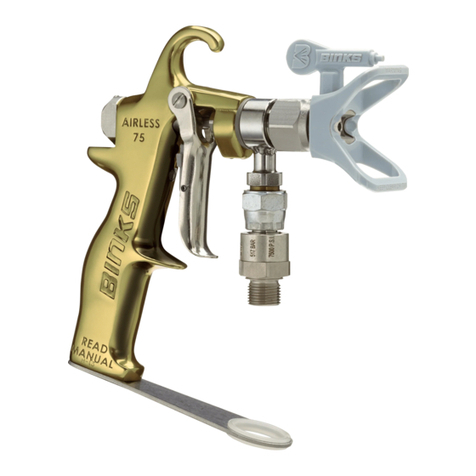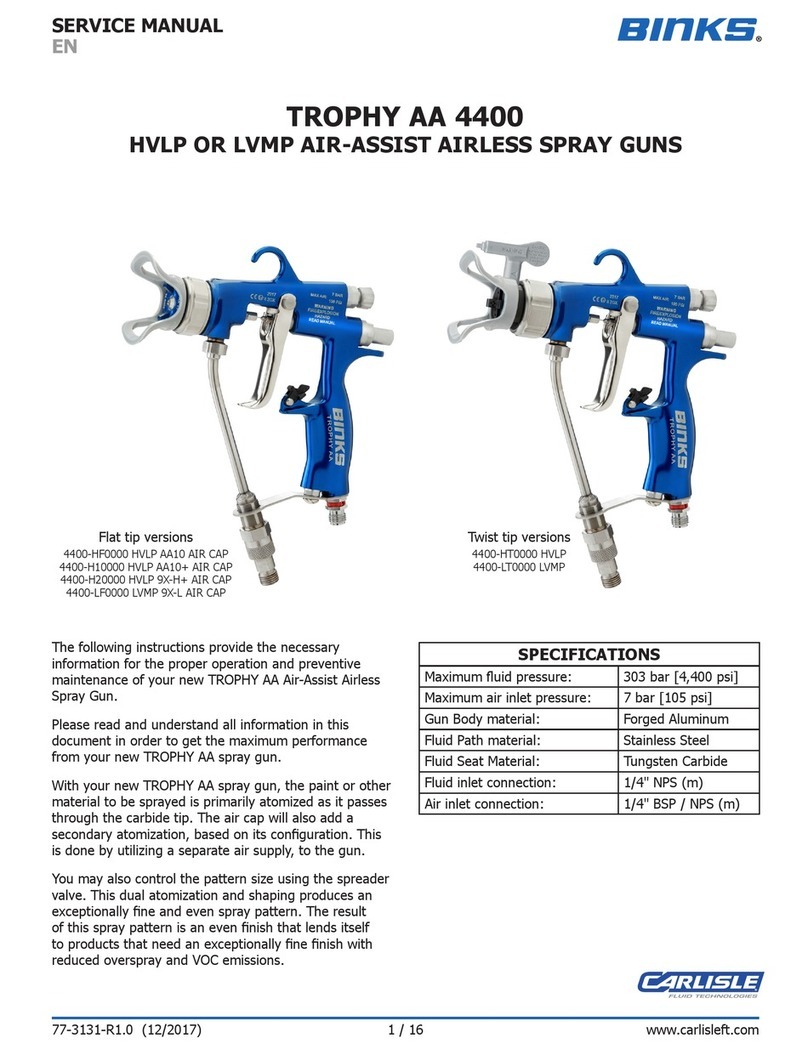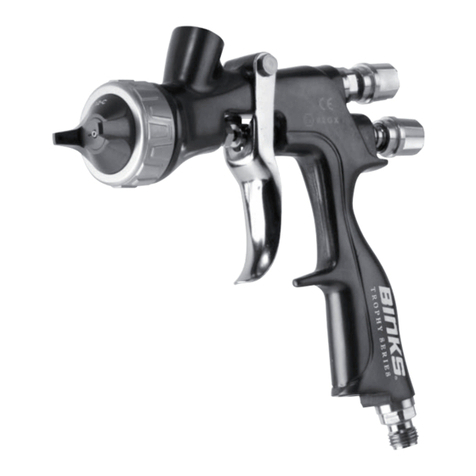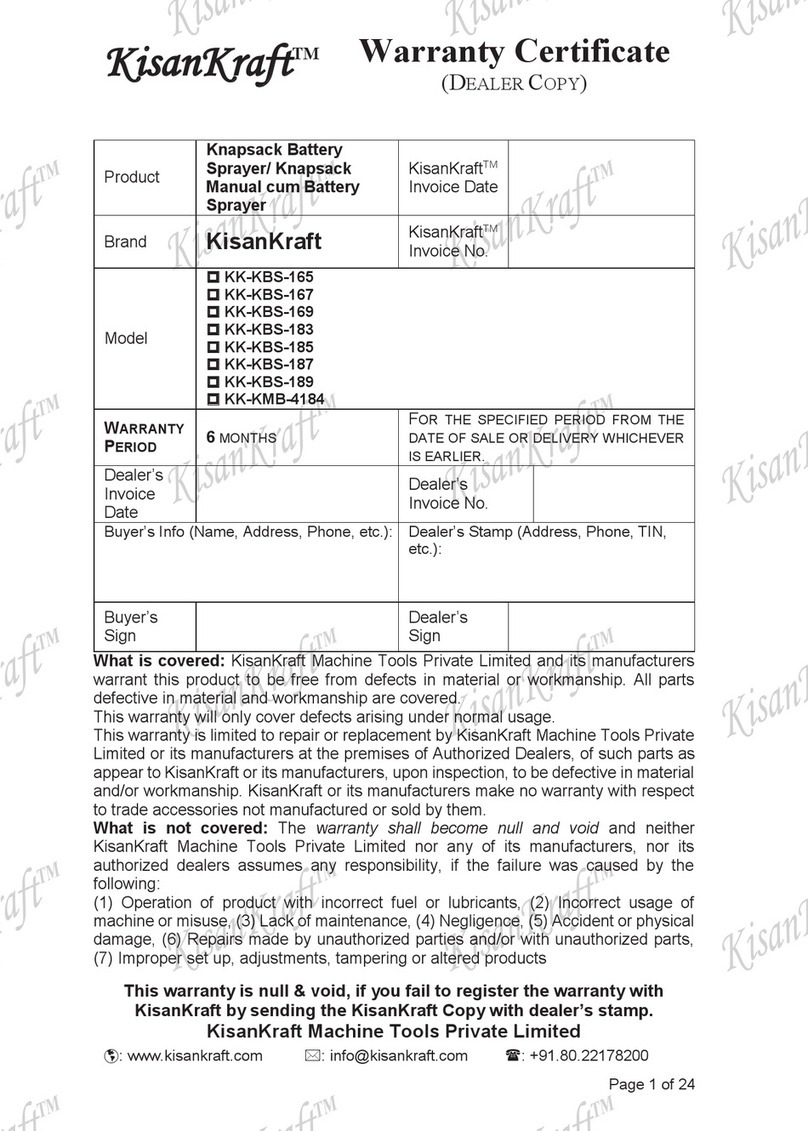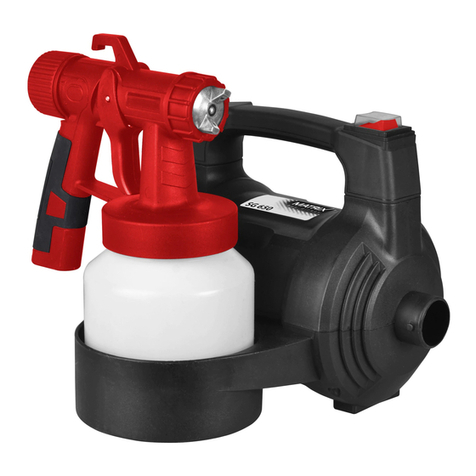Page 3 SBBI-2-181-B
OPERATION
Turn on air supply and set gun inlet
pressure to lowest recommended
pressure for material being sprayed.
Best atomization will occur with 10
PSIG air cap pressure. However, some
materials can be sprayed at lower
pressures, improving transfer effi-
ciency.
If the finish is too sandy and dry, the
material flow may be too low for the
atomization air pressure being used.
If the finish sags, there is too much
material flowing for the atomizing air
pressure being used.
Both of the above can be corrected by
increasing or decreasing the atomiza-
tion air pressure or the material flow.
Pattern width can be altered by
turning the side port knob either clock-
wise to decrease the width or counter-
clockwise to increase the width.
IMPORTANT: This gun may be used
with most common coating and
finishing materials. It is designed for
use with mildly corrosive and non-
abrasive materials. If used with other
high corrosive or abrasive materials, it
must be expected that frequent and
thorough cleaning will be required
and the necessity for replacement of
parts will be increased.
CUP CLEANING
NOTE
For routine cleaning, it is not
necessary to remove cup from
gun. Do not remove cup gasket
from gun. If gasket is removed,
it must be replaced.
Do not soak the lid in solvent
for extended periods of time.
Doing so could cause cup/lid
sealing problems and leakage.
The cup lid is designed to be dispos-
able, but may be cleaned and reused if
slightly contaminated with overspray.
If lid becomes tight, or does not fit, it is
due to extended soaking in solvent. Let
lid air dry overnight and the lid should
return to its original size and fit.
1. Remove lid and properly dispose of
any excess paint.
2. Pour in a small amount of clean
solvent. The amount will vary with
different coatings and solvents.
3. Reinstall lid. Hold lid with finger
covering vent hole. Shake cup to
wash down the inside surfaces.
4. Pull trigger to allow some solvent
to be flushed through gun.
5. Remove lid and pour out dirty
solvent. Add a small amount of
clean solvent and repeat proce-
dure.
6. Wipe exterior of lid with a clean
cloth and clean solvent.
If a paint filter was used in the bottom
of the cup outlet, it should be removed
and cleaned or replaced at this time.
Dispose of used cup lid if contami-
nated and replace with new.
GUN CLEANING
To clean air nozzle and fluid nozzle,
brush exterior with a stiff bristle brush.
If it is necessary to clean air nozzle
holes, use a broom straw or toothpick
if possible. If a wire or hard instru-
ment is used, extreme care must be
used to prevent scratching or burring
of the holes which will cause a
distorted spray pattern.
To clean fluid passages, remove
excess material from the cup, then
flush with a suitable solvent. Wipe gun
exterior with a solvent-dampened
cloth. Never completely immerse in
solvent as this is detrimental to the
lubricants and packings.
SPRAY GUN LUBRICATION
Use Binks Gunner’s Mate lube to lubri-
cate the areas shown below.
PARTS REPLACEMENT
Fluid Nozzle and Needle:
When replacing the fluid nozzle or
fluid needle, replace BOTH at the same
time. Using worn parts can cause fluid
leakage. Also, replace the needle seal
cartridge assembly at this time. Lightly
lubricate the threads of the fluid tip
before reassembling. Torque to 10-12
ft. lbs. Do not overtighten the fluid tip.
To prevent damage to fluid
nozzle or fluid needle, be sure
to either pull the trigger and
hold while tightening or loos-
ening the fluid tip.
Air Valve Assembly:
Remove material control knob, spring
and fluid needle. Unscrew housing and
remove spindle assembly with springs,
seal retainers and o-rings. Lubricate
new o-rings with Gunner’s Mate.
Assemble components using material
needle. Place this assembly along with
housing into gun body and screw into
position. Remove material needle and
tighten housing.
Cartridge Assembly (Needle Packing):
Remove material valve control knob,
spring and fluid needle. Pull back
trigger and remove seal cartridge
assembly. Remove and discard plastic
shipping pin in new cartridge assembly.
Pull back trigger and insert new seal
cartridge assembly. Reassemble
needle assembly, spring and material
valve control knob.
Continued from Page 1
A. Trigger Points
B. Needle Seal Cartridge
C. Adjusting Knobs
D. Baffle Threads
E. Spindle Assembly
A
D
B
E
C
A
